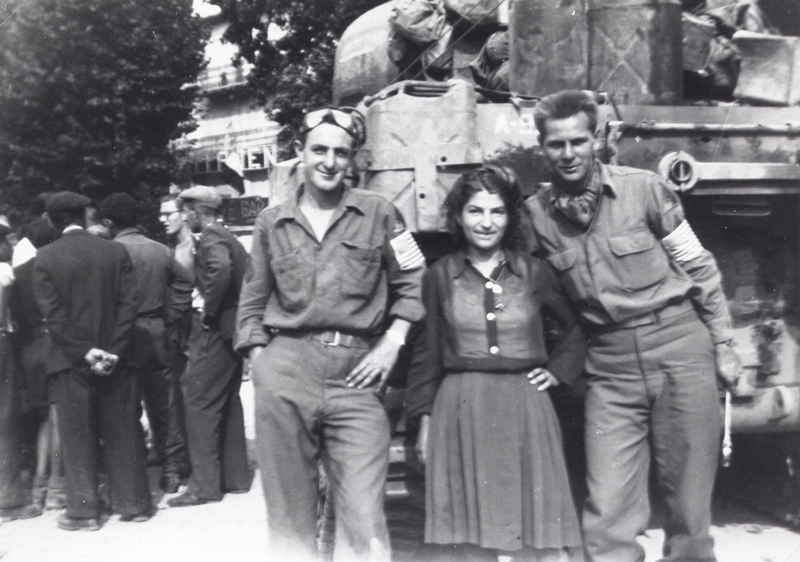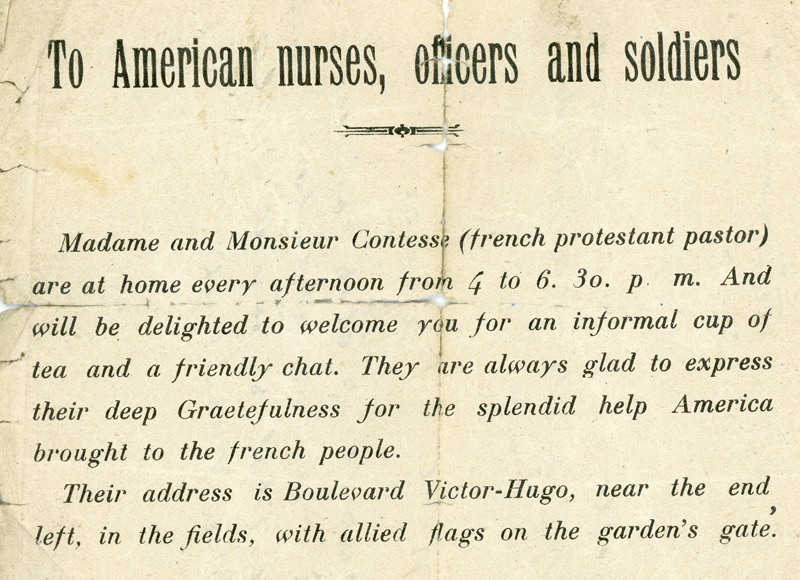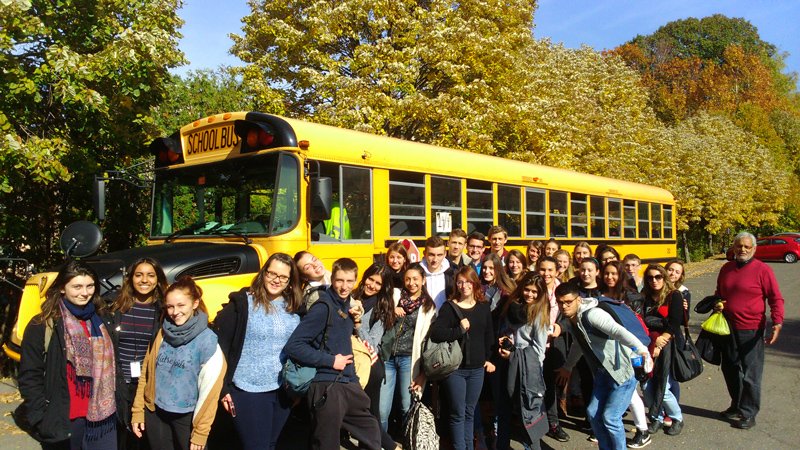Tous les 4 ans, le rendez-vous d’automne des Américains avec leur élection présidentielle est l’occasion partout dans le monde de regarder vers les États-Unis d’Amérique et de s’interroger sur les relations entretenues avec la première puissance mondiale.
Ces relations entre notre pays et les USA sont fortement marquées par l’Histoire, puisque des troupes françaises conduites par le marquis de La Fayette ont participé avec les insurgents à la guerre d’indépendance américaine à partir de 1777, et ainsi contribué à la naissance d’une nation et de la démocratie américaine.
Notre ville pourrait sembler bien éloignée de cette « grande histoire » des relations franco-américaines. Et pourtant, au XXe siècle, les deux guerres mondiales ont contribué à créer un lien historique et mémoriel dont les archives de notre ville conservent le témoignage.
Comme pour beaucoup de villes françaises, la Libération par les troupes américaines en 1944 est restée l’image la plus forte de ce lien, puisque ce sont des GI’s du Texas débarqués quelques jours plus tôt sur les côtes varoises qui, avec la Résistance locale, ont mis fin à l’occupation allemande de Digne le 19 août 1944.
Sans parler la même langue, les jeunes Dignoises pouvaient alors prendre la pose avec les jeunes soldats libérateurs venus de loin, pour des photographies toujours pleine d’émotion 75 ans après (1).
Mais bien avant 1944, des Américains étaient déjà venus à Digne. À l’issue d’une autre guerre dans laquelle leur pays était entré en 1917, aux côtés de la France et de ses alliés.
En effet, si dès l’Armistice du 11 novembre 1918, l’état-major de l’armée américaine a organisé le rapatriement rapide de ses soldats noirs (200 000 hommes sur les 4,8 millions de mobilisés), des troupes ont stationné dans les régions françaises où elles avaient combattu, comme en Lorraine ou dans le Pas-de-Calais. Des milliers de soldats et d’officiers, notamment ceux qui avaient été blessés, sont restés un temps en France, parfois loin à l’arrière des zones de l’ancien front. C’est donc avec ce petit billet que le pasteur protestant évangélique suisse Henri Contesse, installé à Digne depuis 1912, les invite chez lui en 1919 (2).
Heureusement, depuis 1944, les liens entre Dignois et Américains ne sont plus liés seulement à des conflits !
Ces dernières années, plusieurs générations de lycéens d’Alexandra David-Neel (ici en 2015 à Hartford-Connecticut, 3) et du Sacré-Cœur ont ainsi pu découvrir l’American way of life avec leurs correspondants, avant de les accueillir en Provence.
Every 4 years during the fall, the American people elect their president. All over the world, we take this opportunity to look with interest at the United States and to question the relations maintained with the world’s top superpower.
These relations between our country and the USA are strongly influenced by History, since French troops led by the Marquis de La Fayette, alongside with the insurgents, took part in the American war of independence from 1777, and thus contributed to the birth of a nation and the American democracy.
Our town might seem far away from this "great history" of Franco-American relations. And yet, in the 20th century, the two World Wars helped to create a historical and memorial link which is safeguarded in our city's archives.
As for many French towns, the Liberation by American troops in 1944 remained the strongest image of this link, since the Texas GI's who had landed a few days earlier on the Var coast, with the local Resistance, to put an end to the German occupation of Digne on 19 August 1944.
Even if they did not speak the same language, the young Dignoises could then pose with the young liberators coming from far away, and these photographs are still full of emotion 75 years later (1).
But long before 1944, Americans had already come to Digne. It was at the end of another war in which their country had joined in 1917, alongside France and its allies.
In fact, as soon as the Armistice of 11th November 1918 had been signed, the American military staff organized the rapid repatriation of its black soldiers (200,000 men out of the 4.8 million mobilized), troops were stationed in the French regions where they had fought, such as in the Lorraine and in the Pas-de-Calais regions. Thousands of soldiers and officers, especially those who had been wounded, stayed for a time in France, sometimes far from the former war zones. It was therefore with this small note that the Swiss Evangelical vicar Henri Contesse, who had settled in Digne since 1912, invited them to his home in 1919 (2).
Fortunately, since 1944, the relations between Dignois and Americans have no longer been linked to conflicts !
In recent years, several generations of the Alexandra David-Neel high school (here in 2015 in Hartford-Connecticut, 3) and Sacré-Coeur high school students have thus been able to discover the American way of life with their pen pals, before welcoming them to Provence.
Translation Élisa Brunache





